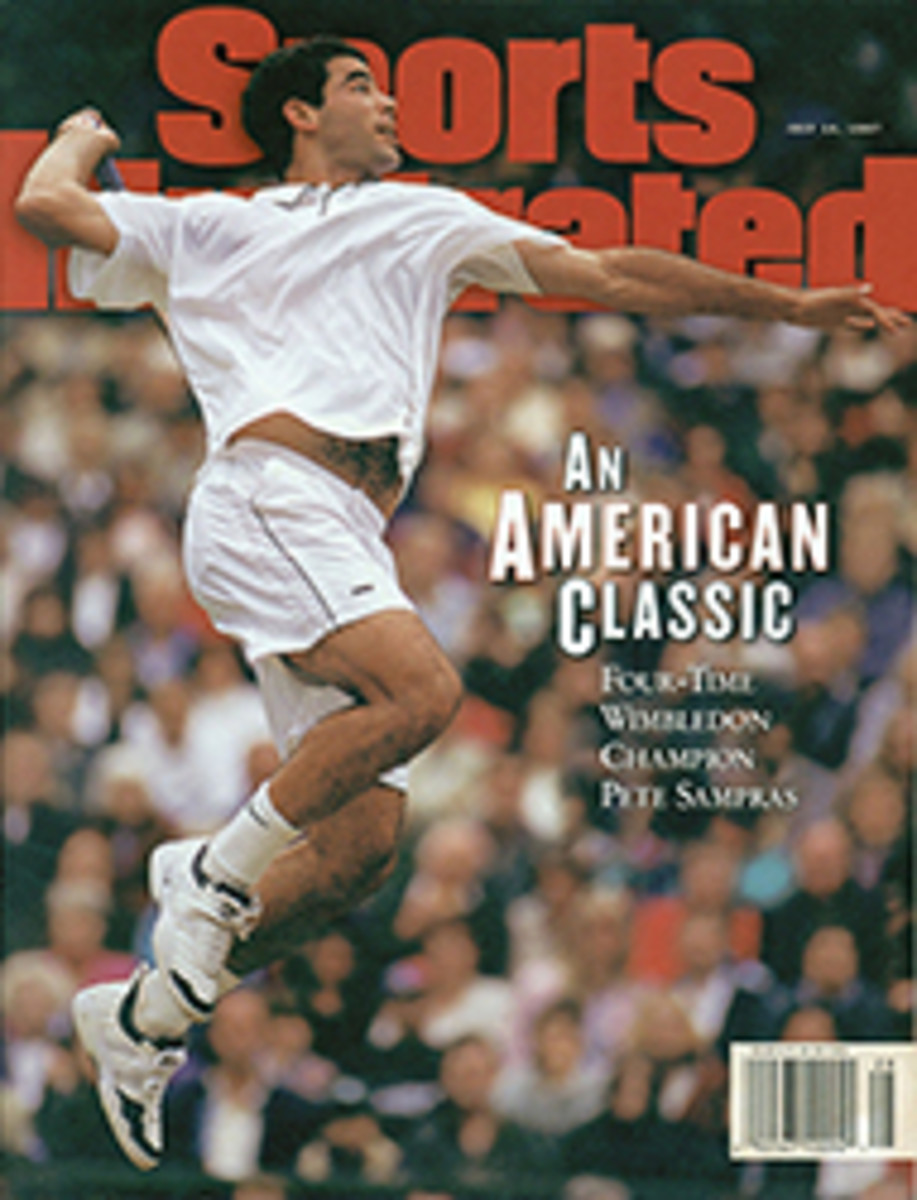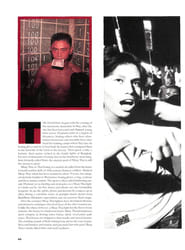
SAFETY DID NOT COME FIRST EVEN AFTER A FATAL 1920 BEANING, PLAYERS WERE SLOW TO ADOPT BATTING HELMETS
In 11 seasons behind the plate, catcher Charlie O'Brien had been
struggling with an occupational hazard: getting knocked upside
the head with errant pitches and foul balls and whacked in the
back of the skull by batters finishing their roundhouse swings.
Then, last year, while watching a hockey game on television, he
had a flash of inspiration: Why not create a catcher's version
of a goalie's helmet? O'Brien came up with the idea for a model
with a deeper chin and neck protector, a curved cage in front
and a hard, molded-plastic plate to protect the back of the
head. The design was refined by Jerry Van Velden, of Van Velden
Mask Inc., the Ontario, Canada, company that developed and now
manufactures the helmet. Today the Toronto Blue Jays catcher
swears by his helmet-mask, saying, "When you get hit, the ball
just glances off."
So far, only a dozen major league catchers have tried the
helmet, which does not require a separate neck shield. Last year
O'Brien was the only one to use it in games; this year, several
other catchers have started using it.
Such resistance shouldn't be a surprise; the reluctance to adopt
any new type of headgear is a baseball tradition. The batting
helmet went through nearly 70 years of experiments and
modifications before evolving into an utterly unremarkable part
of the game. It's hard to imagine a hitter entering the batter's
box with just a cap on, but that was the case until the 1940s.
In fact, the first batting helmet, patented by A.J. Reach Co. in
1905, gathered dust for two years until New York Giants catcher
Roger Bresnahan was knocked unconscious by a pitch in 1907. When
he returned a month later, he stepped to the plate wearing the
ungainly Pneumatic Head Protector, as Frank Pierce Mogridge's
invention was called. Shaped like an oven mitt, it wrapped
around the head and required a teammate to inflate it by blowing
into a rubber tube. Bresnahan would eventually make the Hall of
Fame, and would even introduce shin guards as protective
equipment for catchers, but his headgear never caught on.
Players were beaned over the years, but management didn't become
concerned until a tragic event in August 1920. Facing the New
York Yankees, the popular Cleveland Indians shortstop Ray
Chapman was killed by a pitch from Carl Mays, becoming the only
beaning fatality in major league history. After Chapman's death,
some baseball owners advocated the use of helmets, but they were
reluctant to make it a requirement. Some players experimented
with tight-fitting leather headgear similar to models that had
recently become mandatory in football. Others tested a helmet
lined with cork, which was used by U.S. jockeys. Another
invention covered the head like earmuffs. An article in The New
York Times that August spelled out the problem: "The various
devices invariably meet with some ridicule on the part of
players...and from the fans as well." The trick would be to
find protective gear that didn't look protective.
In 1940 two key Brooklyn Dodgers were disabled after taking
pitches to the head. Rookie shortstop Pee Wee Reese lost an
incoming pitch in the white shirts of the fans sitting in the
centerfield bleachers at Wrigley Field. "I never thought anyone
could hit me in the head," Reese remembers, "but that's what
happens if you can't see the ball. I stepped right into it. They
took me out on a stretcher, and I was out for 18 days."
Less than three weeks later, outfielder Joe (Ducky) Medwick was
also hit in the head. Medwick, the 1937 National League MVP who
had driven in at least 100 runners in six straight seasons
(1934-39), scored 100 runs each year from 1934 to '38 and hit 40
doubles in seven straight years (1933-39), was never the same
hitter.
Dodgers president Larry MacPhail called Dr. Walter Dandy, a
neurosurgeon at Johns Hopkins Hospital, and asked him to design
a functional helmet that would protect players and also would
meet their aesthetic demands. Dandy answered with a hat that
looked like a regular uniform cap but featured a zippered pocket
on each side into which a batter could slip a slightly curved
piece of protective plastic. In a spring exhibition game in
1941, Reese became one of the first major leaguers to play
wearing the hat, an event recorded on sports pages across the
country. Though they remained optional, the shield-reinforced
caps became familiar equipment.
Then, late in the 1952 season, new Pittsburgh Pirates president
Branch Rickey mandated hard plastic batting helmets for his
team. He was also president of the American Baseball Cap
Company, which, perhaps not coincidentally, made helmets.
Players complained that the helmets, which were constructed of
the same fiberglass and polyester resin used in the bulletproof
military gear of the time, were too heavy and that the inner
foam rubber soaked up sweat, which, innings later, dripped into
batters' eyes, obscuring their vision. To make matters worse,
Rickey insisted that his team wear the helmets in the field as
well as at bat.
"You could have put a light on the front and gone into a cave,"
recalls former Pirates catcher Joe Garagiola. Kids sitting
behind the bullpen in Brooklyn's Ebbets Field threw marbles at
the players' heads. Humiliations aside, by 1955, 14 of the 16
major league teams offered helmets to players, and by the end of
the decade helmets with earflaps had been introduced (an
advancement that didn't become mandatory until 1974).
Ted Williams was perhaps the best hitter who shunned hard
helmets throughout his career. He claimed that wearing the
molded type of batting helmet slowed him down. "I didn't feel
like I could get [out of the batter's box] as good with one of
them as with the little insert," the former Boston Red Sox
slugger says.
But a single event in 1952 turned many players around. A
helmeted Paul Pettit, pinch-running for the Pirates in a game
against the Chicago Cubs, was speeding toward second base on a
potential double-play grounder when the shortstop's throw to
second--a bullet--hit him in the head. "All it did was dent the
helmet, and he stayed in the game," recalls Garagiola. "Made
believers out of everybody."
Kate Ledger lives in Baltimore and plays ultimate Frisbee, a
sport that has not yet adopted helmets.
B/W PHOTO: UPI/CORBIS-BETTMANN In 1940, MacPhail (top right) ordered protective caps after Reese (center) and Medwick (left and inset) were beaned. [Joe Medwick, Pee Wee Reese, and Larry MacPhail]
B/W PHOTO: WALTER DANDY PAPERS, ALAN MASON CHESNEY MEDICAL ARCHIVES OF THE JOHNS HOPKINS MEDICAL INSTITUTE [Joe Medwick wearing batting helmet]

